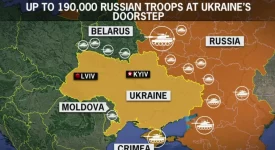The European Union on Friday (4 March) revealed that it was planning to revamp the Schengen area by ending border controls imposed by some Member States because of the migration crisis and restoring the passport-free travel zone by the end of this year. EU leadership moreover called for the creation of an EU border and coastguard force by the summer, which would also include the strengthening of the Greek external border – the main point of entry for thousands of asylum seekers. The Commission explained in the statement that “the objective would be to lift all internal border controls by December, so that there can be a return to a normally functioning Schengen area by the end of 2016”.
The passport-free travel in the Schengen area, which currently includes 26 states, is being jeopardized by the decisions of some countries to reintroduce border controls to stem the flow of refugees through the Union. Last year, the EU granted asylum to more than 1.25 million people, which is more than a double compared to the previous year. Out of 1.25 million, 363,000 refugees were fleeing the war in Syria.
The Commission said that the re-introduction of border controls throughout the Schengen area could cost between €5-18 billion annually, which is 0.05-0.13 percent of the EU’s economic output. “Temporary border controls not only hamper the free movement of persons, they also come with significant economic costs,” the statement continued saying that the restoration of the Schengen area is “of paramount importance for the European Union as a whole.” French President, Francois Hollande, added that in the end, the objective was “to put Schengen back in order, which will happen through coordination, solidarity and reinforcement of our mutual resources”. He moreover emphasized that restoring the Schengen zone was a priority despite the obstacles and difficulties faced by the refugee crisis.







